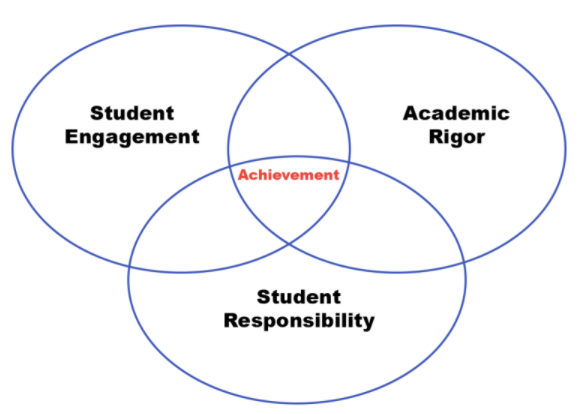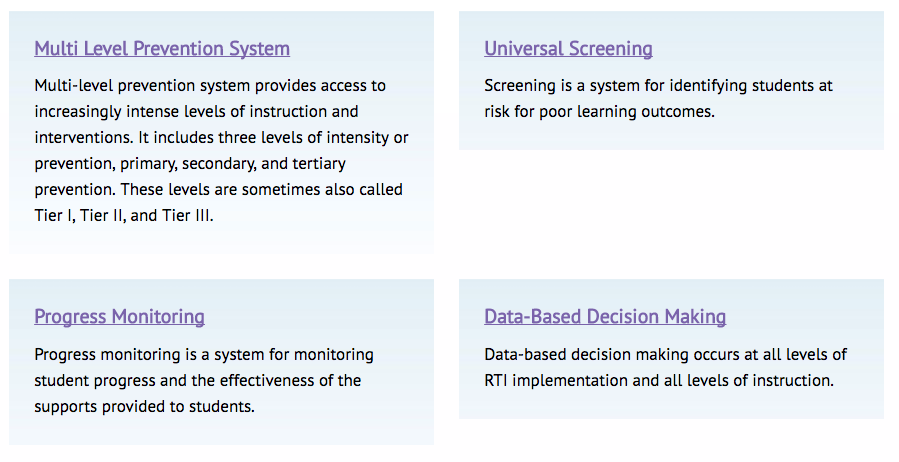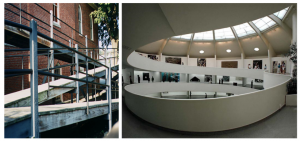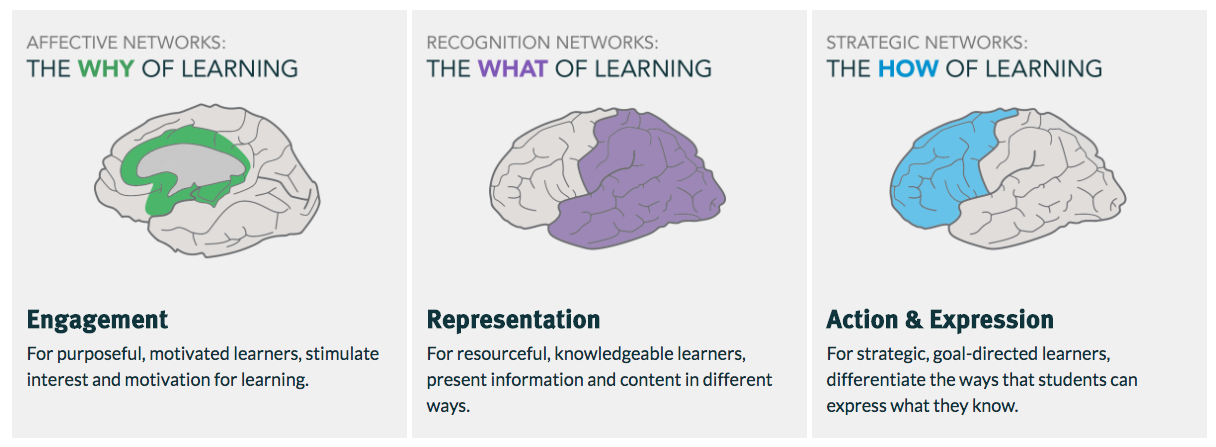How do you ensure that all students achieve at the highest level, thus opening myriad doors for their future? Three popular frameworks converge beautifully to provide the “secret sauce.”
IDE Corp.’s Learner-Active, Technology-Infused Classroom (#LATIC) is a framework for designing student-driven classrooms: It puts students in charge of their own learning to produce greater results. The key is to shift paradigms from “teacher as ferry” to “teacher as bridge builder.” (For more, read Students Taking Charge.) At the core are three tenets:

Response to Intervention (RTI) is a framework to “maximize student achievement and reduce behavior problems,” targeting students who are struggling with learning. The key is to shift paradigms from labeling students as unable to reach high levels to providing different instructional interventions to ensure success at high levels. At the core are four essential components:

From the Center on Response to Intervention
The Learner-Active, Technology-Infused Classroom actually focuses on Tier 1 and Tier 2 instruction in the same setting by reducing the amount of whole-class instruction in lieu of providing differentiated learning activities. Students, therefore, begin by working at their cognitive level and learning style. Teachers are constantly gathering formative assessment data to guide student choices and develop learning options. Where a student is struggling significantly (Tier 3), special education teachers can easily provide a student with one-on-one instruction in the classroom. All students receive one-on-one instruction naturally in the Learner-Active, Technology-Infused Classroom as well. The intent is to teach differently from the start to reduce the need for extensive interventions. While RTI was designed to address issues found in conventional learning environments, it’s important still to recognize the different levels of intervention at work as they emerge in the Learner-Active, Technology-Infused Classroom setting.
Universal Design for Learning (UDL) is a framework “to improve and optimize teaching and learning for all people based on scientific insights into how humans learn.” The key is to provide access for all at the start of the teaching and learning process. A great visual for this is the difference between buildings that were designed for the ambulatory, later retrofitted for access (see the left building with the added ramp), and buildings that were designed with access for all in mind (like the Guggenheim Museum on the right with its infamous spiral walkway). Apply that thinking to instruction and curriculum and you have the concept of UDL!

UDL includes three guidelines:
 The Learner-Active, Technology-Infused Classroom framework naturally includes these guidelines. Students are engaged through problem-based learning and by the teacher using structures that create a “felt need” for learning. Teachers design multiple learning activities to represent content at a variety of cognitive levels and through a variety of learning styles. Students set goals and schedule how they will use their time; they have options for how they will demonstrate learning. IDE Corp.’s UDL summary sheet from the IDEportal may help in ensuring a deliberate and purposeful learning environment.
The Learner-Active, Technology-Infused Classroom framework naturally includes these guidelines. Students are engaged through problem-based learning and by the teacher using structures that create a “felt need” for learning. Teachers design multiple learning activities to represent content at a variety of cognitive levels and through a variety of learning styles. Students set goals and schedule how they will use their time; they have options for how they will demonstrate learning. IDE Corp.’s UDL summary sheet from the IDEportal may help in ensuring a deliberate and purposeful learning environment.
Incorporating all three frameworks into the classroom creates a powerful and effective learning environment. Try it! Change the world!
IDE Corp. provides professional learning experiences and products to design classrooms that promote UDL, allow for three tiers of instruction to take place in the same physical classrooms, and engage and empower students toward efficacy. Contact us! 833-GO-LATIC — solutions@idecorp.com
